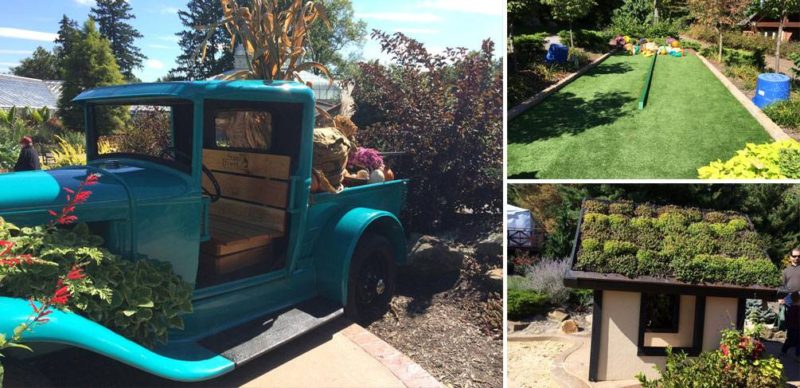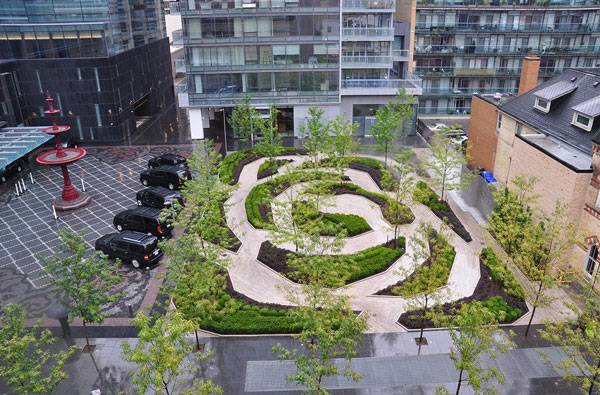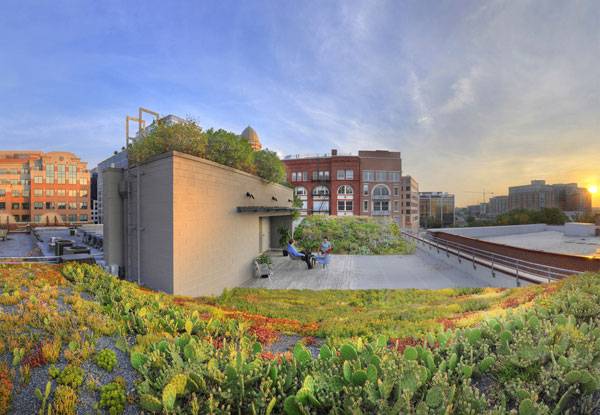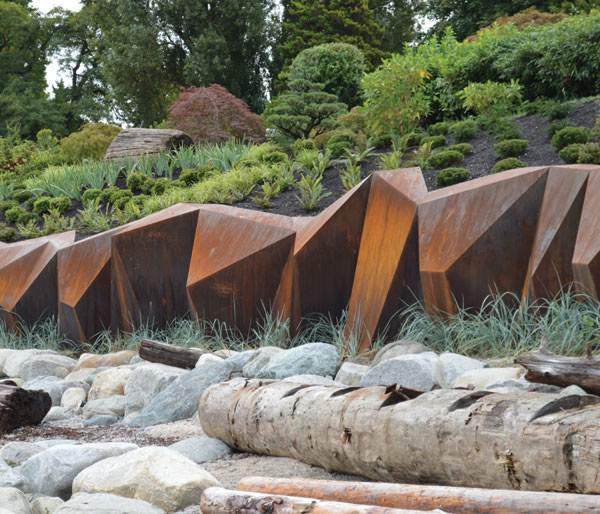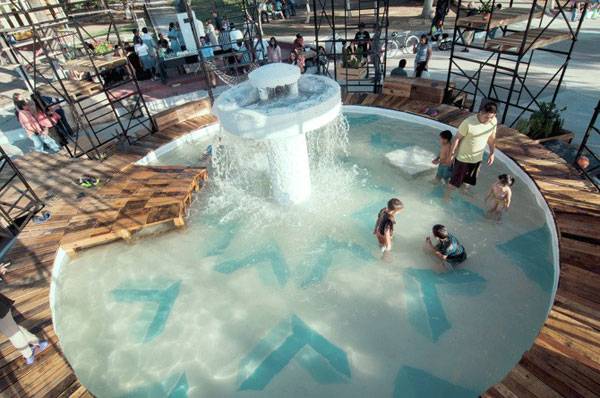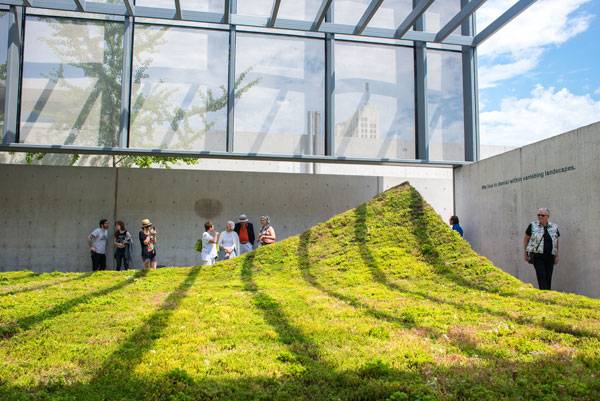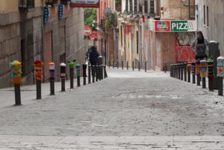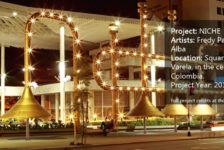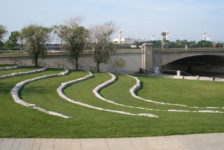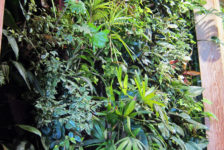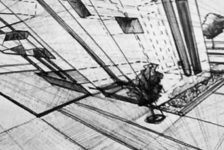Article by Sophie Thiel We take a closer look at landscape architecture in North America that also makes for great tourist destinations. Every person interested in the field of landscape architecture knows and wants to see prestigious projects such as The Highline when visiting New York City or newly hyped ones such as Sugar Beach in Toronto, Ontario. However, these cities — along with all of the other more or less touristic places on this diverse continent — have so much more to offer than the obvious projects of landscape architecture that get maniacal attention anyway. Therefore, the aim of this article is not to create a compilation of the 10 best-known tourist destinations in North America, but to surprise you with hidden spots of landscape architecture to visit during your next trip.
Landscape Architecture in North America
10. The Four Seasons Hotel and Residences in Toronto, Ontario, Canada, by Claude Cormier + Associés In front of the Four Seasons Hotel of Toronto, one can find a pocket park and a carpet-like pavement plaza designed by Claude Cormier. Since the rose-shaped park and the entrance plaza are open to public, it is definitely worth a visit — even if you cannot afford to stay at the high-end hotel next to it. With the design of the tiny plaza and garden, Cormier and Associés created an isle in the style of the Victorian era in the middle of the modern metropolitan skyscrapers. It is a place where stylistic elements from the 19th century are amplified successfully to fit modern-day perceptions.
9. ASLA headquarters in Washington, D.C., USA, by Michael Van Valkenburgh Associates Inc. and Conservation Design Forum The American Society of Landscape Architecture – ASLA – is internationally known and appreciated for its commitment to the profession, as well as for the pioneer work that is often done in the field of landscape architecture. Its headquarters in the heart of Washington, D.C., mirrors this commitment in the form of the new 3,000-square-foot green roof. Obviously, it is not surprising that the design of this green roof was conceived for both research purposes and to engage the public imagination of sustainability by educating audiences about the green roof agenda. The green roof of ASLA headquarters was also featured in the following article by LAN’sPaul McAtomney: USA’s Got Talent. 10 Awesome Projects From The USA 8. Metamorphous in Vancouver, British Columbia, Canada, by Paul Sangha Landscape Architecture One man’s joy is another man’s sorrow: The existence of the Metamorphous project — a wonderful seawall sculpture — was made possible due to the occurrence of King Tides that struck and destroyed the coastline of Vancouver in 2012. To avoid further foreshore erosion, the landscaping team made every endeavor to create something durable, but also extraordinary. The idea evolved into the creation of an abstract seawall sculpture, inspired by the natural form of the sandstone rock formations of British Columbia. The different meanings of Metamorphous mirror in every single detail of the project. The used material – CorTen steel – demonstrates one of the meanings in an exemplary way: It has an ability to change its appearance over time. 7. Uptown Normal in Normal, Illinois, USA, by Hoerr Schaudt The circle of Uptown in Normal – a city located between the two major cities of Chicago and St. Louis, Missouri — has nothing to do with a conventional roundabout. A resurgence of new life and energy came along with the redevelopment of the business district that transformed Normal into a vibrant and sustainable destination. The circle became the new center, not only due to its traffic calming function to a former misaligned intersection, but mostly because it incorporates a small park and plaza with a million extras added. If you come by the city of Normal, I would strongly recommend that you park the car and go for a stroll to Uptown’s new meeting circle, lie down in the grass, or watch the water circle in its educationally arranged basin. 6. Urban Spa in Chihuahua, Mexico, by students of ISAD, in cooperation with PKMN architects With the Urban Spa, an attraction was added to the Chihuahua city center. In short, this project is a reactivation of an unused water source and neglected public space. However, if you look more deeply into it, a success story is revealed: The Urban Spa installation shows how to rejuvenate a public space and, at the same time, create an attraction for all by uniting a neighborhood. Indeed, it is a project to learn from. Do not miss this thriving and colorful fountain with the important added value of social resilience. 5. Peak Experience in San Francisco, California, USA, by Atlas Lab During your stay in San Francisco, you definitely have to visit Market Street, with its Peak Experience project. It is definitely hard to pass by without recognizing the tiny but bright pink replications of San Francisco’s rolling hills. The city’s famous hilly topography has curated and framed its diverse neighborhoods. However, Market Street was built on a rare flat land, lacking the iconic views of San Francisco’s landscape. The Peak Experience project added a collection of undulating mini-mounds that vary in elevation, finally allowing Market Street to take part in the city’s iconic terrain play. 4. Simcoe WaveDeck in Toronto, Ontario, Canada, by West8 and DTAH Another unique project in Toronto – a city full of astonishing landscape architecture – is the Simcoe Wavedeck at the central waterfront. The wooden deck structure is a one-of a-kind project that adds a sense of interconnectedness and identity to Toronto’s new waterfront at Lake Ontario. The functional but artistic design features an informal public amphitheater-style space with impressive curves that soar more than 2.5 metres above the lake. This unique design was inspired by the shoreline of Ontario’s Great Lake, as well as the famous Canadian cottages. The WaveDeck is meant to give urban dwellers a feel for life at the lake – it is a place to play and live for young and old.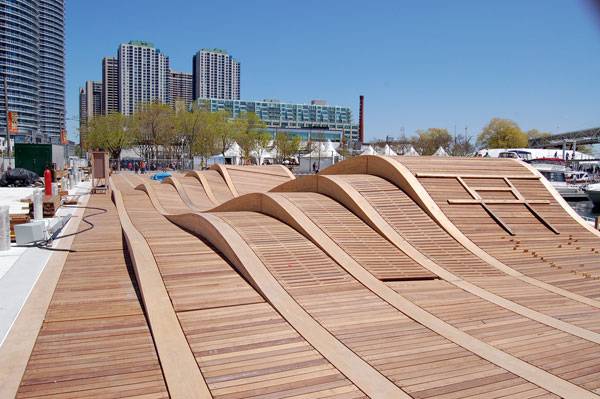
By Jacob Mitchell from Toronto, Canada – West8_DTAH_Simcoe_deckUploaded by Skeezix1000, CC BY-SA 2.0, Wikipedia

Greenacre Park. Image courtesy of Sasaki Associates
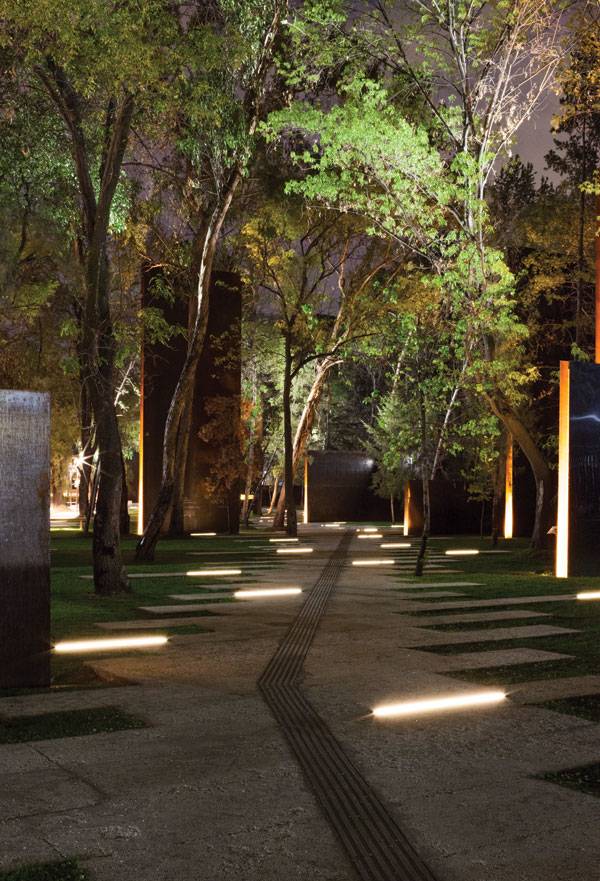
Memorial to Victims of Violence in Mexico, by Gaeta Springall Architects.
Taken in Year: 2013. Photo credit: Sandra Pereznieto.
Enhance Your Travel Experience Landscape Architecture in North America
With this article, I am not telling you to avoid well-known places such as The Highline on your next trip to North America, but to keep always in mind all of the rather unknown spots in between. Even if some of the projects mentioned above might be only temporary, there are always new spots of landscape architecture springing up around us, in cities and in rural landscapes. Keep your eyes open for the unexpected, hidden ones that are not hyped in every travel guide. This instruction applies not only to North America, but also to every journey you will go on round the whole globe. Have you already seen some of those hidden spots? If yes, where and what kind of project has it been? I am curious to hear your personal stories and experiences!
Recommended Reading:
- Becoming an Urban Planner: A Guide to Careers in Planning and Urban Design by Michael Bayer
- Sustainable Urbanism: Urban Design With Nature by Douglas Farrs
Article by Sophie Thiel
Published in Blog

